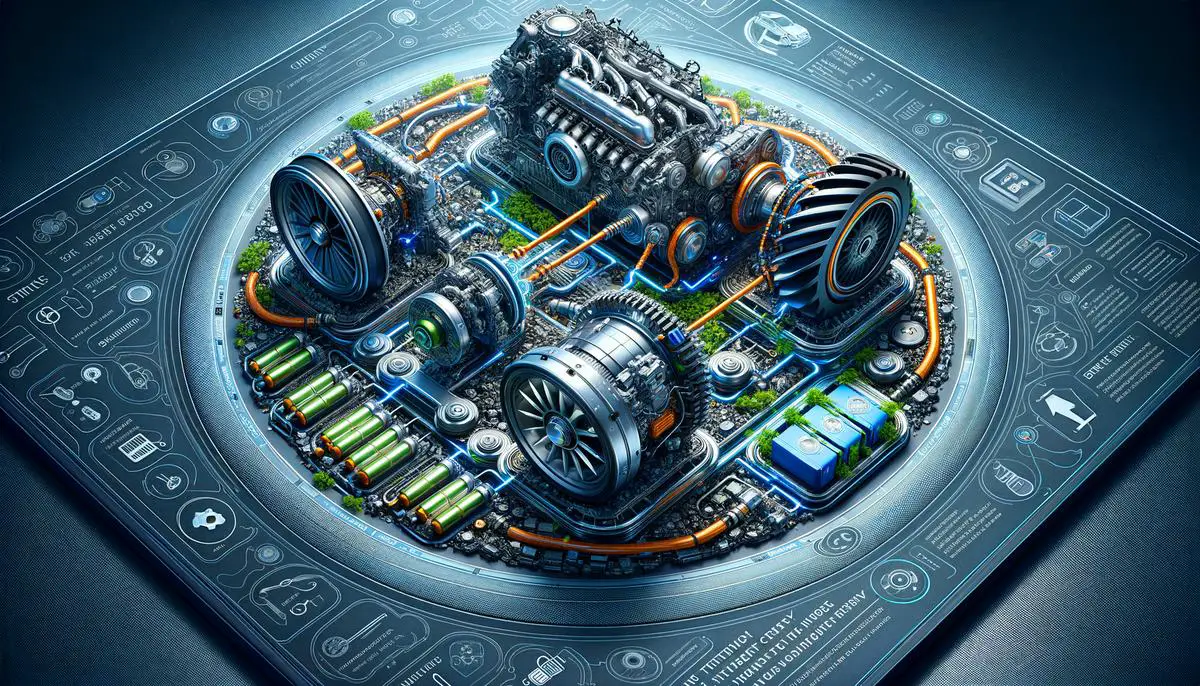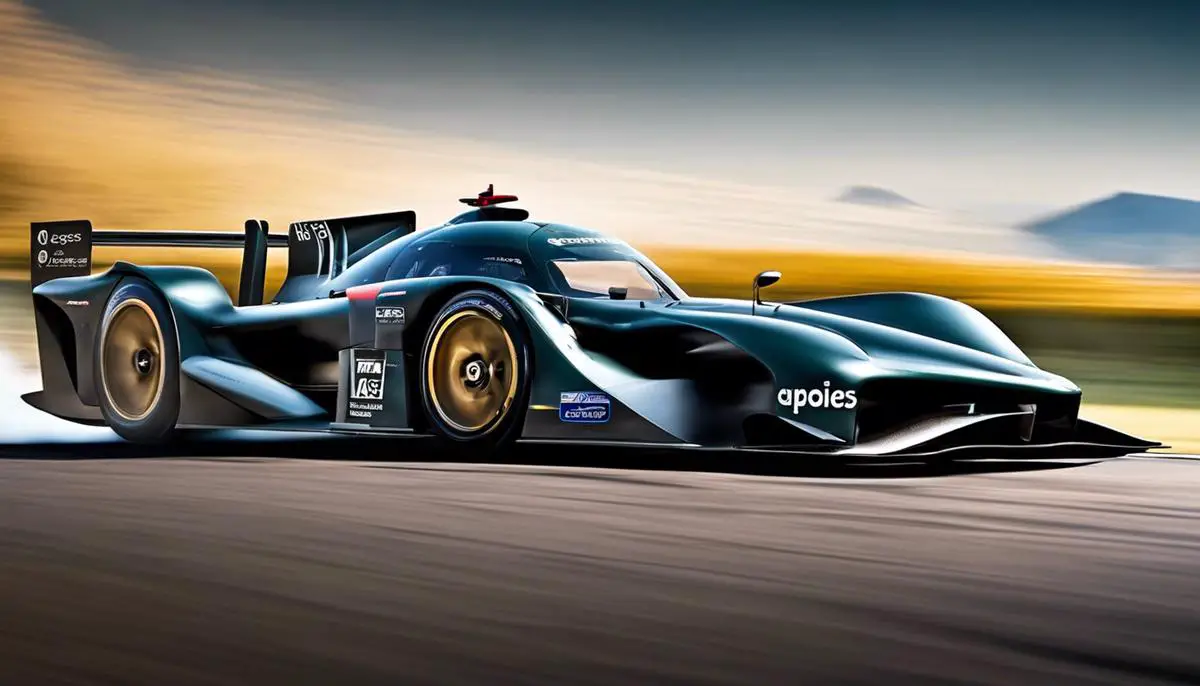Contents
Hybrid Powertrains
Hybrid powertrains combine the reliability of the internal combustion engine (ICE) with the instant torque of an electric motor. When you drive a hybrid car, these power sources work together to provide a smooth ride. But how does this combination function?
The ICE, fueled by gasoline, creates motion through combustion, turning the crankshaft and spinning the wheels. The electric motor, powered by batteries, provides immediate power, allowing the car to accelerate quickly.
Hybrids alternate between these power sources. At lower speeds or when cruising, the electric motor often takes the lead, reducing gasoline consumption and emissions. As you accelerate or climb a hill, the ICE provides extra power for demanding tasks.
Regenerative braking is another key feature. When slowing down, the electric motor acts as a generator, converting the car's kinetic energy into electrical energy to recharge the battery. This energy recycling improves efficiency.
Switching between power sources happens automatically, thanks to advanced vehicle computers. The car selects the most efficient mode based on driving conditions, transitioning between electric and gasoline power as needed.
Series and parallel hybrids offer different configurations of this collaboration. Series hybrids use the gasoline engine to power a generator, creating electricity for the electric motor. Parallel hybrids allow both the ICE and electric motor to drive the wheels directly, either together or independently.
Hybrids deliver good fuel efficiency and lower emissions without compromising range or refueling convenience. They represent a step towards a more environmentally friendly future, combining traditional and modern technologies to keep us moving forward.
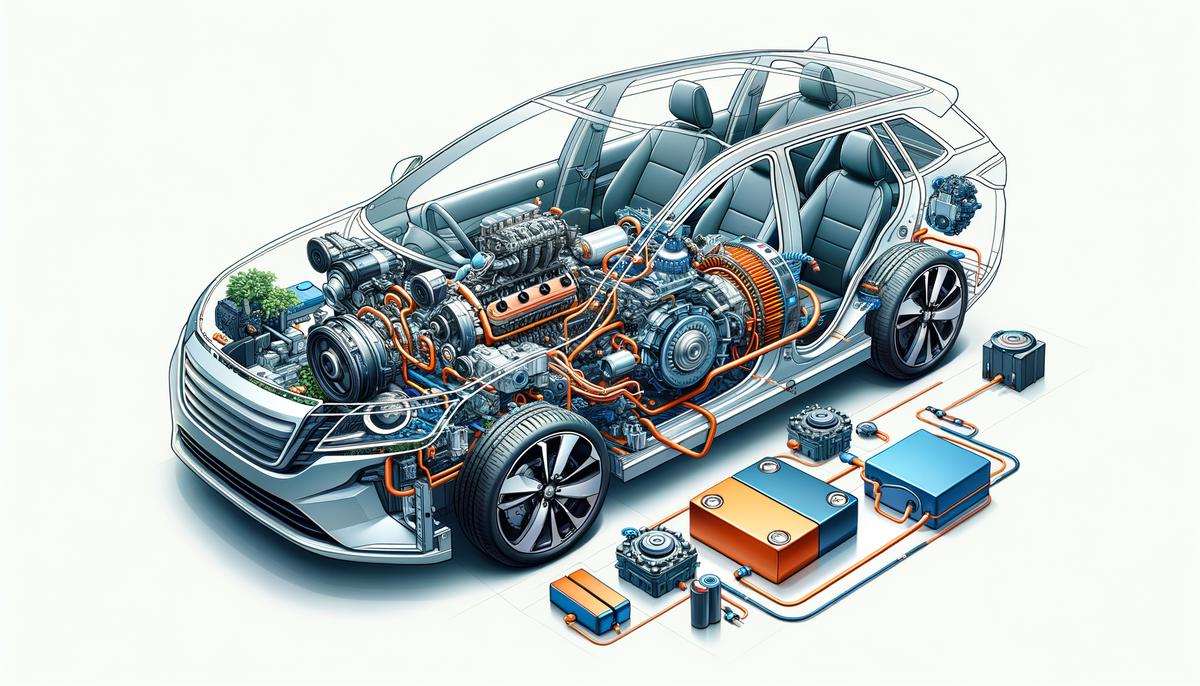
Regenerative Braking
Regenerative braking is an important component of the hybrid system, transforming your vehicle's stopping power into a battery recharge. This engineered process maximizes efficiency by capturing energy that would otherwise be lost. Let's explore how it works.
In a conventional car, pressing the brake pedal converts kinetic energy into heat at the brake discs. Hybrids, however, employ regenerative braking to capture this energy. When you brake, the vehicle's computer switches the electric motor to act as a generator, converting kinetic energy into electrical energy. This energy charges the battery, providing power for later use.
Regenerative braking benefits both the driver and the environment:
- By charging the battery during braking, hybrids improve fuel economy and extend battery life.
- This energy redirection means less gas consumption and reduced emissions.
Moreover, regenerative braking enhances the driving experience by encouraging gentler braking practices. Easing into stops maximizes energy recovery and promotes a more relaxed driving style.
Regenerative braking is a smart engineering solution that improves energy conservation in motion. This system is a key benefit of driving a hybrid: increasing vehicle efficiency while reducing emissions and fuel costs. The next time you coast to a stop in a hybrid, appreciate the relationship between moving and stopping made possible by regenerative braking.
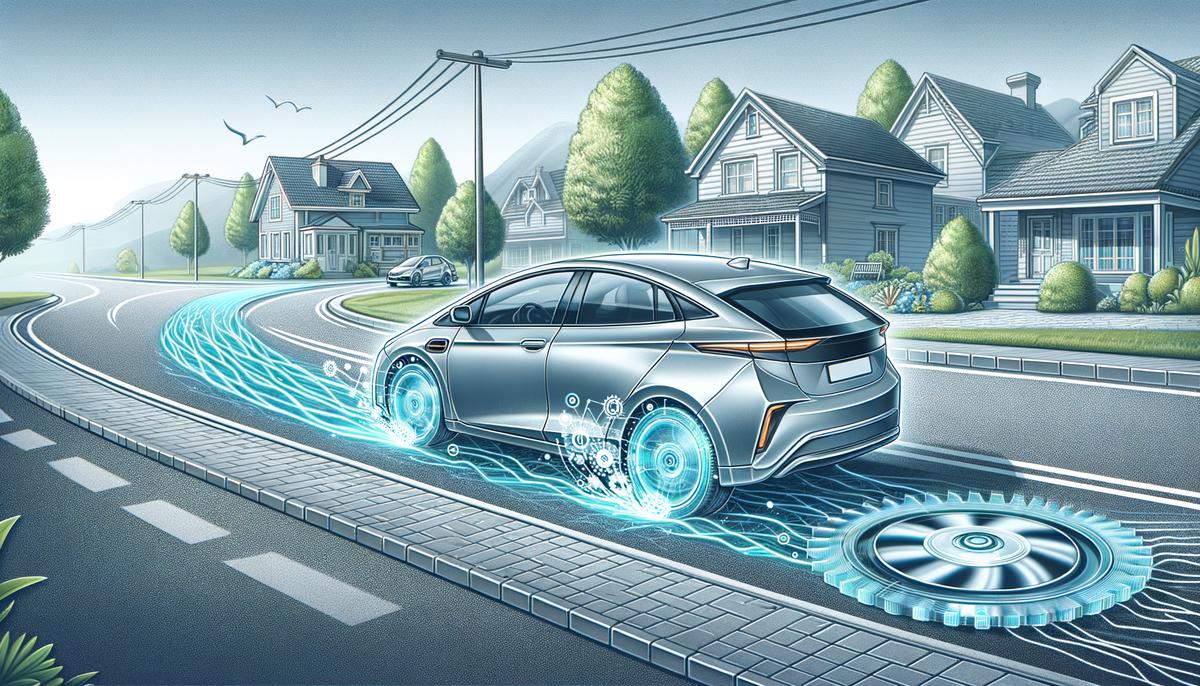
Battery Technology
In the world of hybrid systems, the battery is the conductor, orchestrating the interplay between electric power and combustion. Today's hybrid batteries showcase advancements, reflecting the evolution from room-sized computers to pocket-sized devices.
Early hybrids used lead-acid batteries, which were robust but heavy and space-consuming. As hybrids gained popularity, nickel-metal hydride (NiMH) batteries emerged, offering lighter weight and better energy density.
However, lithium-ion batteries have become the dominant choice in modern hybrids. These batteries store more energy, charge faster, and have a longer lifespan compared to their predecessors1. They provide good performance in a lightweight package, contributing to improved efficiency.
Lithium-ion batteries also feature sophisticated Battery Management Systems (BMS) that regulate charging, discharging, and heat management. This meticulous energy management ensures a smooth power flow to the electric motor, prolonging battery life and enhancing reliability.
Researchers continue to push the boundaries of battery technology, seeking breakthroughs in power, efficiency, and longevity. Solid-state batteries promise faster charging times and higher energy densities, while advances in recycling technologies promote sustainability and material utilization.
These advancements in battery technology have propelled hybrids from niche vehicles to mainstream options. They underscore the effectiveness of combining gasoline engines with electric motors, moving towards cleaner, smarter mobility.
As you step into your hybrid, remember that you're engaging with a legacy of innovation powered by cutting-edge technology. Batteries have established themselves as the backbone of modern hybrid systems, paving the path towards an efficient future.
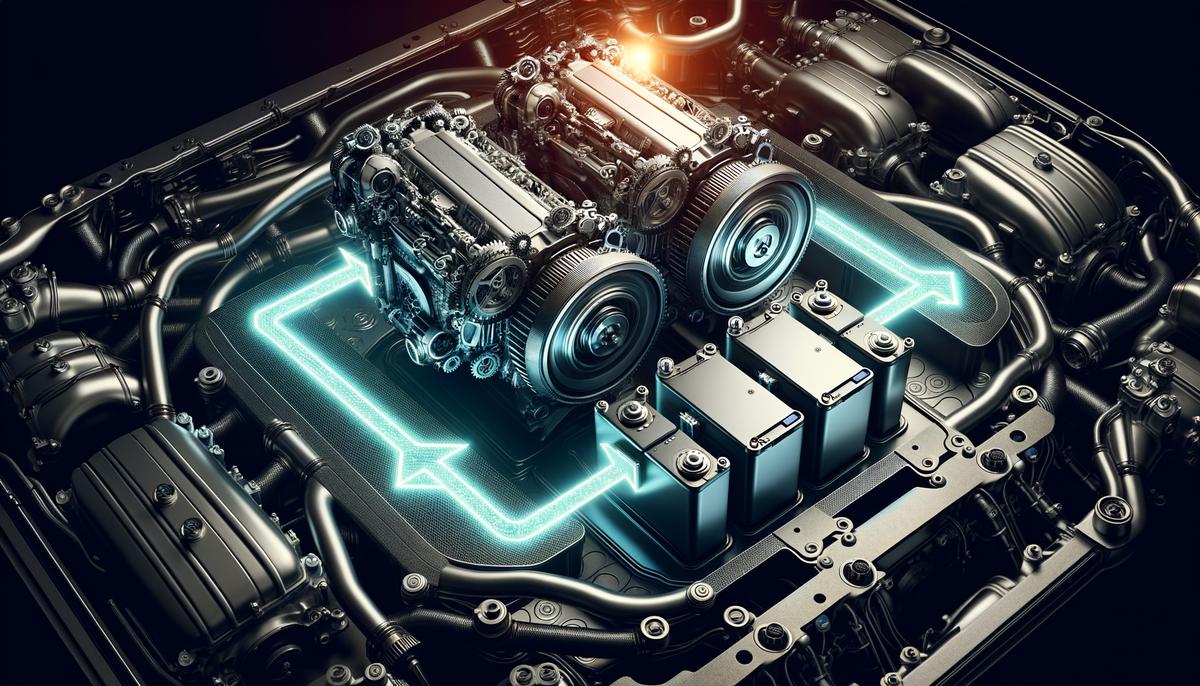
Hybrid Configurations
Hybrids have harnessed their dual power sources in various configurations to achieve optimal efficiency and smooth operation. These setups—series, parallel, and plug-in hybrids—represent distinct engineering approaches, each with its own strengths and characteristics.
Series Hybrids
In a series hybrid, the internal combustion engine doesn't directly drive the wheels. Instead, it generates electricity to power the electric motor, which propels the vehicle. The gasoline engine kicks in when more power is needed, acting as a generator rather than directly driving the car. This configuration offers simplicity and seamless electric drive but can be less efficient due to indirect power delivery.
Parallel Hybrids
Parallel hybrids allow both the internal combustion engine and the electric motor to directly power the vehicle's wheels, either together or independently. This setup enables an efficient blend of fuel and electric propulsion, adapting to various driving conditions. However, it requires complex engineering to manage and synchronize the power sources effectively.
Plug-in Hybrids (PHEVs)
Plug-in hybrids (PHEVs) introduce the ability to charge the vehicle's battery from an external power source. These vehicles typically start on stored electricity alone, providing an all-electric driving range2. When the battery is depleted or during long-distance travel, the gasoline engine takes over. Plug-in hybrids offer the benefits of electric daily commutes combined with the extended range of a traditional gasoline engine. However, they require larger batteries, which can impact cost, weight, and space.
Each hybrid configuration has its own niche:
- Series hybrids excel in simplicity and seamless electric driving, ideal for those who prioritize quiet cruising without range concerns.
- Parallel hybrids offer balanced performance across various driving conditions, appealing to those seeking efficiency without sacrificing direct control.
- Plug-in hybrids provide flexibility, enabling electric short trips while maintaining gasoline power for longer journeys.
As technology advances, new hybrid configurations may emerge, further improving efficiency and sustainability in the automotive landscape.
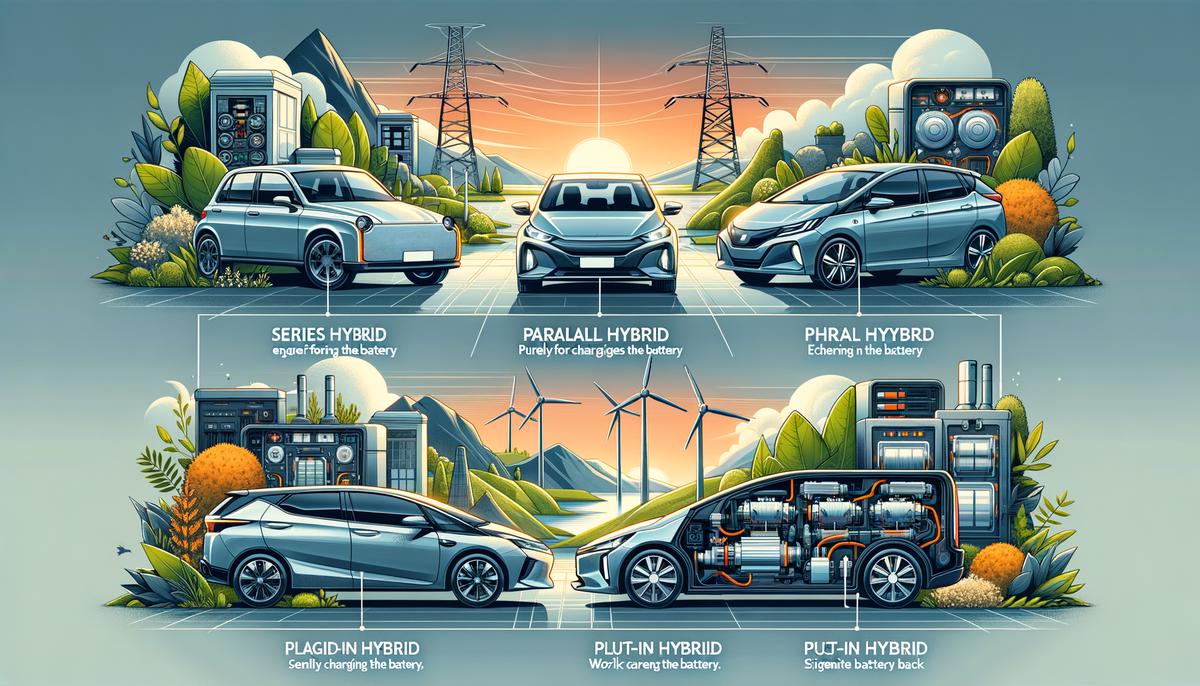
- Miao Y, Hynan P, von Jouanne A, Yokochi A. Current Li-ion battery technologies in electric vehicles and opportunities for advancements. Energies. 2019;12(6):1074. doi:10.3390/en12061074
- Xing Y, Ma EW, Tsui KL, Pecht M. Battery management systems in electric and hybrid vehicles. Energies. 2011;4(11):1840-1857. doi:10.3390/en4111840
